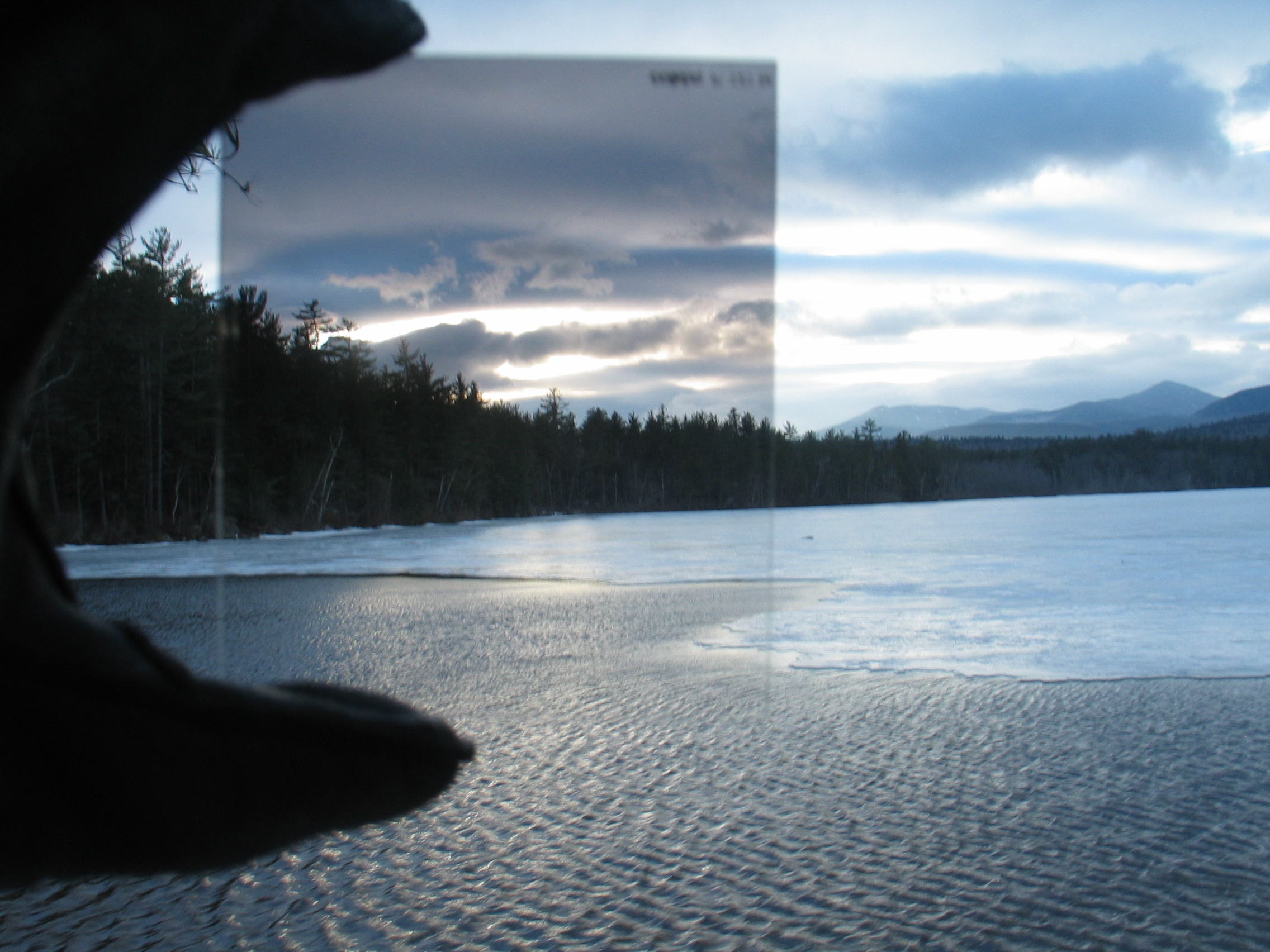|
Graduated Neutral-density Filter
A graduated neutral-density filter, also known as a graduated ND filter, split neutral-density filter, or just a graduated filter, is an optical filter that has a variable light transmission. Typically half of the filter is of neutral density which transitions, either abruptly or gradually, into the other half which is clear. It is used to bring an overly-bright part of a scene into the dynamic range of film or sensor. For example, it can be used to darken a bright sky so that both the sky and subject can be properly exposed. ND filters can come in a variety of shapes and sizes and densities and can be used in all types of photographic applications from still photography, motion photography and scientific applications. Center-spot filters are ND graduated filters that are slightly opaque in the center and are clear at edges. These are used for special effects or to compensate for light falloff that is natural with large optics. History Graduated filters were used in the early ... [...More Info...] [...Related Items...] OR: [Wikipedia] [Google] [Baidu] |
GND Demo
GND may refer to: * Graduated neutral density filter * Green New Deal * Ground (electricity) * (Integrated Authority File) * Maurice Bishop International Airport in Grenada * Zulgo-Gemzek language Zulgo-Gemzek is an Afro-Asiatic language spoken in northern Cameroon. Dialects are Gemzek, Mineo, and Zulgo (Zəlgwa). Blench (2006) considers Zəlgwa-Minew and Gemzek to be distinct languages.Blench, 2006The Afro-Asiatic Languages: Classificati ..., spoken in Cameroon * Gabriel Nadeau-Dubois, a politician in Quebec {{disambiguation ... [...More Info...] [...Related Items...] OR: [Wikipedia] [Google] [Baidu] |
